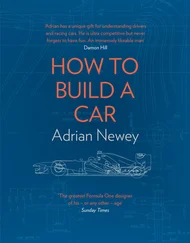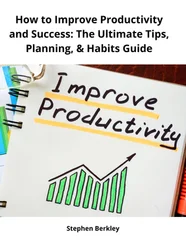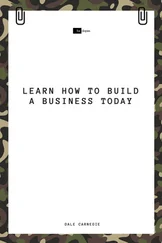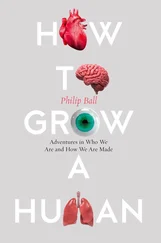Eyal, Nir - Hooked - How to Build Habit-Forming Products
Здесь есть возможность читать онлайн «Eyal, Nir - Hooked - How to Build Habit-Forming Products» весь текст электронной книги совершенно бесплатно (целиком полную версию без сокращений). В некоторых случаях можно слушать аудио, скачать через торрент в формате fb2 и присутствует краткое содержание. Год выпуска: 2014, Издательство: Nir Eyal, Жанр: Старинная литература, на английском языке. Описание произведения, (предисловие) а так же отзывы посетителей доступны на портале библиотеки ЛибКат.
- Название:Hooked: How to Build Habit-Forming Products
- Автор:
- Издательство:Nir Eyal
- Жанр:
- Год:2014
- ISBN:нет данных
- Рейтинг книги:5 / 5. Голосов: 1
-
Избранное:Добавить в избранное
- Отзывы:
-
Ваша оценка:
- 100
- 1
- 2
- 3
- 4
- 5
Hooked: How to Build Habit-Forming Products: краткое содержание, описание и аннотация
Предлагаем к чтению аннотацию, описание, краткое содержание или предисловие (зависит от того, что написал сам автор книги «Hooked: How to Build Habit-Forming Products»). Если вы не нашли необходимую информацию о книге — напишите в комментариях, мы постараемся отыскать её.
Hooked: How to Build Habit-Forming Products — читать онлайн бесплатно полную книгу (весь текст) целиком
Ниже представлен текст книги, разбитый по страницам. Система сохранения места последней прочитанной страницы, позволяет с удобством читать онлайн бесплатно книгу «Hooked: How to Build Habit-Forming Products», без необходимости каждый раз заново искать на чём Вы остановились. Поставьте закладку, и сможете в любой момент перейти на страницу, на которой закончили чтение.
Интервал:
Закладка:
Hooks connect the user’s problem with a company’s solution frequently enough to form a habit. My goal is to provide you with a deeper understanding of how certain products change what we do, and by extension, who we are.
***
How to Use this Book
At the end of each section, you’ll find a few bulleted takeaways. Reviewing them, jotting them down in a notebook, or sharing them on a social network is a great way to pause, reflect, and reinforce what you have read.
Building a habit-forming product yourself? If so, the “Do This Now” sections at the end of subsequent chapters will help guide your next steps.
***
Remember and Share
- Habits are defined as behaviors done with little or no conscious thought.
- The convergence of access, data, and speed is making the world a more habit-forming place.
- Businesses that create customer habits gain a significant competitive advantage.
- The Hook Model describes an experience designed to connect the user's problem to a solution frequently enough to form a habit.
- The Hook Model has four phases: trigger, action, variable reward, and investment. [xvi]
1. THE HABIT ZONE
When I run, I zone out. I don’t think about what my body is doing and my mind usually wanders elsewhere. I find it relaxing and refreshing, and run about three mornings each week. Recently, I needed to take an overseas client call during my usual morning run time. “No biggie,” I thought. “I can run in the evening instead.” However, the time-shift created some peculiar behaviors that night.
I left the house for my run at dusk and as I was about to pass a woman taking out her trash, she made eye contact and smiled. I politely saluted with, “Good morning!” — then caught my mistake. “I mean, good evening! Sorry!” I corrected myself, realizing I was about 10 hours off. She furrowed her brow and cracked a nervous smile.
Slightly embarrassed, I noted how my mind had been oblivious to the time of day. I chided myself not to do it again, but within a few minutes I passed another runner and again — as if possessed — I blurted out, “Good morning!” What was going on?
Back home, during my normal post-run shower, my mind began to wander again as it often does when I bathe. My brain’s autopilot switch turned on and I proceeded with my daily routine, unaware of my actions.
It wasn’t until I felt the nick of the razor cutting my face that I realized I had lathered-up and started shaving. Although it is something I do every morning, shaving was painfully unnecessary in the evening. And yet, I’d done it anyway, unknowingly.
The evening version of my morning run had triggered a behavioral script that instructed my body to carry out my usual, run-related activities — all without mindful awareness. Such is the nature of ingrained habits — behaviors done with little or no conscious thought — which by some estimates, guide nearly half of our daily actions. [xvii]
Habits are one of the ways the brain learns complex behaviors. Neuroscientists believe habits give us the ability to focus our attention on other things by storing automatic responses in the basal ganglia, an area of the brain associated with involuntary actions. [xviii]
Habits form when the brain takes a shortcut and stops actively deliberating over what to do next. [xix]The brain quickly learns to codify behaviors that provide a solution to whatever situation it encounters.
For example, nail biting is a common behavior that occurs with little or no conscious thought. Initially, the biter might start chomping on her cuticles for a reason — to remove an unsightly hangnail, for example. However, when the behavior occurs for no conscious purpose — simply as an automatic response to a cue — the habit is in control. For many persistent nail biters, the unconscious trigger is the unpleasant feeling of stress. The more the biter associates the act of nail chomping with the temporary relief it provides, the harder it becomes to change the conditioned response.
Like nail biting, many of our daily decisions are made simply because that was the way we have found resolution in the past. The brain automatically deduces that if the decision was a good one yesterday, then it is a safe bet again today and the action becomes a routine.
On my run, my brain had associated making eye contact with another person during my run with the standard “Good morning!” greeting, thus I automatically uttered these words no matter how inappropriately timed.
Why Habits are Good for Business
If our programmed behaviors are so influential in guiding our everyday actions, surely harnessing the same power of habits can be a boon for industry. Indeed, for those able to shape them in an effective way, habits can be very good for the bottom line.
Habit-forming products change user behavior and create unprompted user engagement. The aim is to influence customers to use your product on their own, again and again, without relying on overt calls-to-action such as ads or promotions. Once a habit is formed, the user is automatically triggered to use the product during routine events such as wanting to kill time while waiting in line.
However, the framework and practices explored in this book are not one-size-fits-all and do not apply to every business or industry. Entrepreneurs should evaluate how user habits impact their particular business model and goals. While the viability of some products depends on habit-formation to thrive, that is not always the case.
For example, companies selling infrequently bought or used products or services do not require habitual users — at least, not in the sense of everyday engagement. Life insurance companies, for instance, leverage salespeople, advertising, and word-of-mouth referrals and recommendations to prompt consumers to buy policies. Once the policy is bought, there is nothing more the customer needs to do.
In this book, I refer to products in the context of businesses that require ongoing, unprompted user engagement and therefore need to build user habits. I exclude companies that compel customers to take action through other means.
Before diving into the mechanics of how habits are made, we must first understand their general importance and competitive benefits for businesses. Habit formation is good for business in several ways.
Increasing Customer Lifetime Value
MBAs are taught that a business is worth the sum of its future profits. This benchmark is how investors calculate the fair price of a company’s shares.
CEOs and their management teams are evaluated by their ability to increase the value of their stocks — and therefore care deeply about the ability of their companies to generate free cash flow. Management’s job, in the eyes of shareholders, is to implement strategies to grow future profits by increasing revenues or decreasing expenses.
Fostering consumer habits is an effective way to increase the value of a company by driving higher customer lifetime value (CLTV). CLTV is the amount of money made from a customer before she switches to a competitor, stops using the product, or dies. User habits increase how long and how frequently customers use a product, resulting in higher CLTV.
Some products have a very high CLTV. For example, credit card customers tend to stay loyal for a very long time and are worth a bundle. Hence, credit card companies are willing to spend a considerable amount of money acquiring new customers. This explains why you receive so many promotional offers, ranging from free gifts to airline bonus miles, to entice you to add another card or upgrade your current one. Your potential CLTV justifies a credit card company’s marketing investment.
Читать дальшеИнтервал:
Закладка:
Похожие книги на «Hooked: How to Build Habit-Forming Products»
Представляем Вашему вниманию похожие книги на «Hooked: How to Build Habit-Forming Products» списком для выбора. Мы отобрали схожую по названию и смыслу литературу в надежде предоставить читателям больше вариантов отыскать новые, интересные, ещё непрочитанные произведения.
Обсуждение, отзывы о книге «Hooked: How to Build Habit-Forming Products» и просто собственные мнения читателей. Оставьте ваши комментарии, напишите, что Вы думаете о произведении, его смысле или главных героях. Укажите что конкретно понравилось, а что нет, и почему Вы так считаете.












